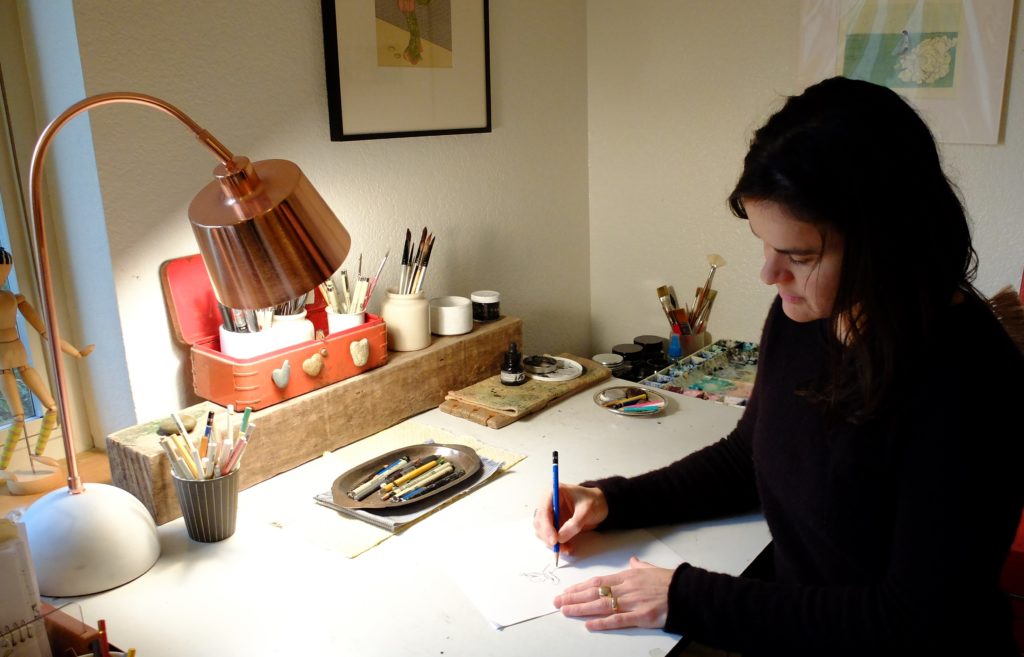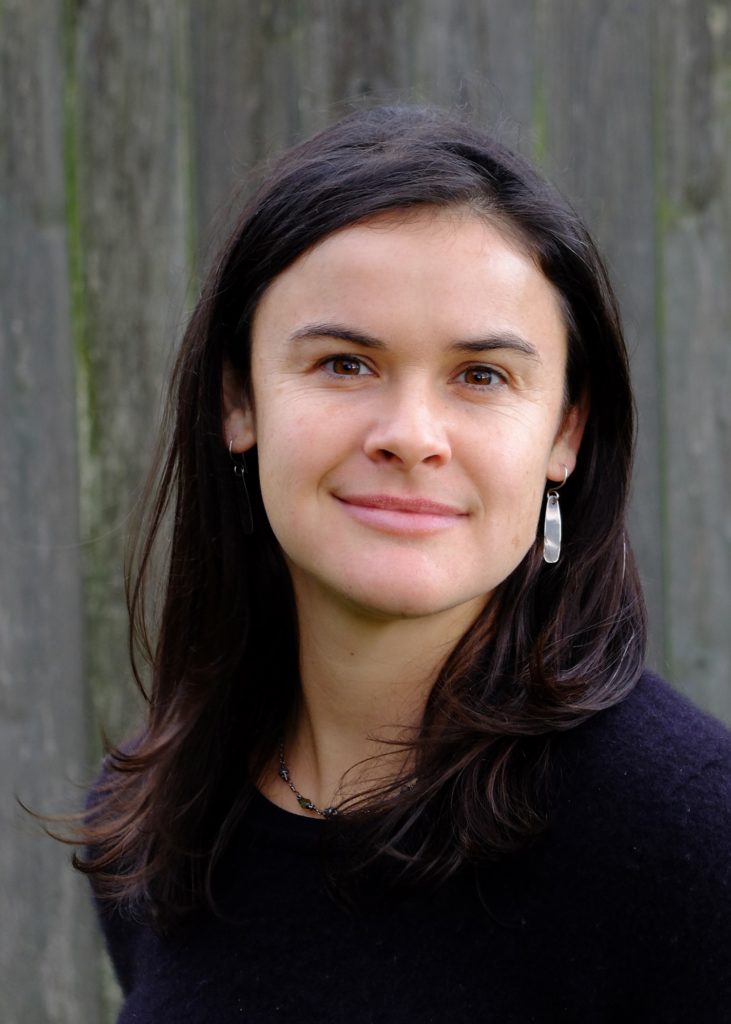Corinna Luyken: "Creativity is full of imperfections" October 14, 2019 – Posted in: Books, Children, Interview – Tags: child, author, interview, Fluffy

photo ©MacLeod Pappidas
Interview at Gogo Karkanis for Woman Toc
Corinna Luyken, author-illustrator of The Book of Mistakes, inspires young and old to transform clumsy pencils into a magical world.
Page by page, one splash, one clumsy pencils, transforms into one girl and then to a whole people, simple in colors but overflowing with magical forms. The "Book of mistakes", which has just been released by Furfouri editions, it is one Children's Book with one allegory-exhortation to all ages: Let's try to see the mistakes us, at paper or at Zoe, as an opportunity to create something new, sometimes not by correcting them but pressing on them. Let's accept them, let's let's hug, after all, the very process of creation revolves around imperfections.
From one series of errors the idea of the book also arose, as she told us American author-illustrator by Corinna Luyken. Idea that led to this gem-edition for the library, which received a special honorable mention the 2018 in international awards Bologna Ragazzi Opera Prima (awarded annually at the International Children's Book Fair in Bologna).
"For years I painted me pen because I liked her wet feeling of of ink on the paper. I liked how, with the pen, a line may enlivennarrates Corinna. “But often that life turned into forms and signs which I did not originally intend to do and could not delete». But that didn't keep her away from the ink. He continued to use it, gradually learning to faces such accidents. If he made a mistake in face, he was wearing glasses. If she didn't like the way she had drawn one hand, you might add gloves. “And somewhere along the way I learned to enjoy the fact that every error it was pushing me to find one new way to see him people. And I began to wonder if embracing our mistakes was something that could be taught."

In the meantime the creator began to notice one motif in the schools where he delivers, at the same time, art classes. There were one or two in each class children who, within minutes of starting to paint, were asking for one new paper glue. They didn't like what they were doing and wanted to start over. "I undertook to help them see them prospects who had their mistakes, how they could continue painting by evolving these mistakes in something that again will them liked».
This is how the idea of the "Book of Mistakes" slowly began to take shape in her mind. The but a decisive fact, what perhaps led her to put it into practice, was one reaction which she noticed in hers daughter, when it happened four years old. Up until that age, whatever she drew she liked. "He saw no mistakes, just shapes and lines and colors and textures. And he loved the process of painting itself. And then one day, while he was painting, he broke out tears and threw her paper on the floor. He had made one error. He couldn't fix it. That too cracked her heart my. Not yet, I remember thinking. Not her. Not at all. Not now. So I wrote this book. For her. For those kids. For me. For everyone who they have made a mistake».
Corinna was avid reader from small. He read so many books as a child that in fifth grade, where her teacher had a calendar on the wall of the books each student was reading, her list it was twice as much from the next largest. “I remember feeling a bit embarrassed about it as a kid, but the truth is I was a speed read. Also, when I was in elementary school my mom went back to her studies, so evenings and weekends studying were what I perceived as everyday life us".
Growing up, and on the occasion of a children's book of his George Saunders in illustration Lane Smith ("The Very Persistent Gappers of Frip") Corinna also realized her magic which happens when the words and the images are joined and create something that exceeds each one individually. That, in her opinion, is what makes a book really good: "When words and images don't simply repeat each other. I think in a really good picture book, if you take one or the other away you lose something." Like unified vision she also produced the "Book of Errors", where the concise but complete text works like the final Touch which complements the glossy illustration, like a piece of a puzzle that comes to complete the picture.

©MacLeod Pappidas
How can we help children manage their mistakes?
“I think it's important, as adults, to show that U.S. too doing mistakes in painting. I was recently talking to a teacher who admitted he had taken an afternoon art workshop at school… but he was reluctant to he paints in front of the kids! He felt embarrassment at the thought that they would see them "limited" artistic skills her. For me, he is just the one reason for whom you should we paint with them. Even if we are not good at drawing, it is important to let the children see us do it. Otherwise, we pass it message that the only artists in the room are those who give the impression that they are "good" in it, children who can put pencil to paper and draw something that looks like it almost realistic.
"This is lie. I was never the "best" in art in my class, but I loved painting. And she love, more than any skill, is what makes someone artist. By showing that those who "don't draw well" shouldn't draw at all, we teach children that creativity it is not for everyone. And that couldn't be further from her truth!
"So, if you are parent the teacher and you don't have technical skills in painting, it's important to make paintings that don't show perfect. We all want to look good at what we do, especially when there is an audience. But when creating art with children, it's important to show exactly what creativity looks like – and nothing about it is perfect! THE creativity is chaotic. He is an incessant dance between how you want them to be seen things and what you really manage to you create. But in this dance there are infinites prospects and beauty.
"So, either you teach artistically in a class either you paint after children you, I would tell you to let them see you do mistakes, allow your art to have imperfections. This is how you show them that their own drawings don't have to be either flawless. This is how you do it fun art. When I teach a class, I always try to be intentional a mistake while presenting some work. And then I show a few different ways that I could do it correct or to it transform. It instantly lightens the mood in the classroom. One error from the teacher is like a open door who says everyone is welcome».
